
In my recent post on KevinMD, a??Deeply Connect and Engage Your Patients With Empathy,a?? I write about how empathy is essential to help empower our patients: a??It is with empathy that we can engage and empower our patients.a??
Doctors and nurses are leaders in health care.
Being a great leader means having a clear vision, mission or goal. It means being committed, and knowing how to listen and communicate, but it involves much more.??Ita??s about having heart, empathy, and an uplifting spirit.
I value and respect a well written post by Thomas Goetz, author of The Decision Tree: Taking Control of Your Health in the New Era of Personalized Medicine recently published on KevinMD, a??How can doctors successfully engage their patients?a?? Goetz writes about a??Five things they should seek to give every patient, strategies to tap the most underutilized resource in medicine, their patient,a?? however I feel the most critical ingredient is missing, empathy.
Empathy
It is with empathy that we can engage and empower our patients. With empathy and heart we can help our patients feel good, valued and respected.??Empathy allows us to engage and empower our patients to take charge of their health and well-being.
I was recently invited to be a keynote speaker on the subject of a??Patient Empowerment: Engaging Our Patients to Take Charge of Their Healtha?? by the New York State Department of Health and Mental Hygiene a?? Bureau of Tuberculosis Control Unit 2010 a?? MD Seminar.??Chrispin Kambili, MD, Assistant Commissioner is a passionate leader who empowers his staff and patients.??Evidenced by the enthusiastic discussion in the room, the doctors and nurses present were extremely motivated and are leaders who engage their patients with empathy and heart. They listen with compassion to their patients stories, recognizing that to treat their patientsa?? disease, TB, a curable disease; they need to understand the whole story (the psychosocial issues) family issues, financial struggles, etc., since compliance and adherence to completing their medication course is critical.
Despite the disease, all patients matter.
Clinical Empathy
According to Jodi Halpern, MD, PhD author of a??What is Clinical Empathy?a?? in the Journal of General Internal Medicine:
a??Empathy involves being moved by anothera??s experiences. In contrast, a leading group from the Society for General Internal Medicine defines empathy as a??the act of correctly acknowledging the emotional state of another without experiencing that state oneself.a??
With empathy we can connect with our patients, we have an understanding of what it is they are going through, and by acknowledging their emotional state and listening attentively, we can engage our patients and empower them to be proactive and in charge of their health care.
a??The great gift of human beings is that we have the power of empathy.a??- Commencement speech to Barnard College, 2010, Meryl Streep talking about the importance of empathy
Often patients want to feel that you are there for them.??Sometimes they are not looking for lengthy discussions and overly involved detailed information.??They want simple, accurate and informative information that is pertinent to them and presented in a genuine manner. They want to feel that they matter, and any questions they may have are not insignificant. They want to feel valued and respected.
On occasion patients may only need a a??looka?? or an unspoken word that says you care.??Body language is essential in engaging with patients.??Ita??s how you make them feel, thata??s important.
Without empathy, all of the a??Five thingsa?? that Goetz writes about, perhaps may serve no purpose; or very little.??Goetz writes about the five things doctors should give their patients; transparency, repetition, resources, patience and goals; however without empathy, without feeling a connection and understanding your patients, achieving those a??five thingsa?? may be difficult.
Recognizing how a patient feels is essential.
Patients want to feel trust, a connection, and comfort with their health professionals.??When doctors and nurses recognize how patients feel, it will help enhance the doctor/patient and nurse/patient relationship; it will facilitate a connection with their patient, which is essential.
If doctors and nurses are not genuine, if they are unengaged, cold, stilted, and do not sense how patients feel; communication may be hindered and patients will miss out on the opportunity to become engaged and empowered patients.
Barriers to empathy
While there are several barriers to empathy, we can educate ourselves to overcome them so that we may provide our patients the best quality care. According to a??What is Clinical Empathya?? by Jodi Halpern, MD, PhD, the barriers to empathy include:
First, anxiety interferes with empathy. Time pressure is invoked as a concrete barrier to listening to patients, but probably functions more as a psychological barrier, making physicians anxious. This can be addressed in part by showing physicians that listening can make care more efficient.
A second barrier to empathy is that many physicians still do not see patientsa?? emotional needs as a core aspect of illness and care.?? Research shows that doctors who regularly include the psychosocial dimensions of care communicate better overall.
A third barrier to empathy comes from the negative emotions that arise when there are tensions between patients and physicians. Physicians who feel angry with patients and yet find such feelings unacceptable face barriers to thinking about the patienta??s perspective.
Despite the barriers, empathy is critical and enhances communication.
Engaging patients with empathy can lead to a better doctor/patient and nurse/patient relationship.??By listening and communicating we can understand and guide our patients.??Empathy enhances patient-physician communication and trust, and therefore treatment effectiveness.
Why is engagement so important? When patients are engaged with their doctors and nurses they can feel empowered and are better able to participate in their own health and well-being.
Understanding and guidance is essential.
Patients need understanding and guidance.??They need to learn that ita??s okay to ask questions and to take charge.??They need to learn that they can be empowered, proactive and in charge of their health and well-being no matter who they are.??While some patients are savvy, there are patients who feel intimidated to be assertive.??They dona??t know how to ask questions or to speak up, but they can learn.??As professionals we can help them.??We can guide them and encourage them to take to charge of their health care.
We can let them know that ita??s okay to write their questions in a notebook, and to take important notes so that they dona??t forget what is being told to them. I love talking with patients and families.??And whenever a patient or family member has many questions, typically, they apologize for asking so many questions, but I encourage it.??Ita??s wonderful that they have so many; it demonstrates to me that they are interested in their health care, and I let them know that they do not need to apologize for asking questions. a??Ita??s great that youa??re taking charge of your health, you are an empowered patient,a?? I emphatically state to them.
We can empower our patients to manage their disease, to take control of their lives and their own care.
Leta??s look at how advertising agencies engage consumers, and how doctors and nurses can learn from them.
Advertising agencies are masters at connecting with consumers.??They easily engage them.
How do ads engage consumers? (Picture a commercial you would see during the super bowl or an ad in your favorite magazine.)
- Capture attention
- Engage the consumer
- Make them act, to buy a product or behave in a certain way
How do doctors, nurses and other clinicians capture their patientsa?? attention, engage them and help them react to take charge of their health care?
Capture attention: Though a genuine and motivating conversation.??Foster trust and respect. Talk with patients listen to them and understand them, hear their story, and know your patients.
Engage patient: With empathy, heart and compassion.
Help them react: Inspire them to value their health with understanding and guidance.??Help them become compliant; help them improve adherence, follow treatment plan. The way advertisers want consumers to react to buy productsa?|health professionals want patients to reacta?|.they want them to be compliant and adhere to their treatment plan; and to become empowered to take charge and well-being.
Engage with empathy and heart
If we engage with empathy and heart we can help empower patients to take charge of their health and well-being. It is how we make them feel that counts.
Your turn
We would love for you to share your insights. For the health professionals, what are your feelings about engaging your patients with empathy? For patients, are your health professionals empathetic? Is there something different that you would like to see your health professionals do?
As always, thanks for your time. It is greatly appreciated.
Original Post is published on KevinMD.

s




 This past weekend Oscar-nominated Hollywood and Broadway actress Jill Clayburgh died at age 66. The cause was chronic lymphocytic leukemia (CLL), which she had been fighting, privately, for 21 years.
This past weekend Oscar-nominated Hollywood and Broadway actress Jill Clayburgh died at age 66. The cause was chronic lymphocytic leukemia (CLL), which she had been fighting, privately, for 21 years.
 Male readers be advised! Using your laptop placed on your knees to read this post may cause your testicles to heat up quite significantly. However surprisingly, this is not due to the heat dissipated by many laptops, but rather due to the positioning of the legs. A study just published online in the journal Fertility and Sterility investigated ways to avoid the testicles from overheating while using a laptop computer.
Male readers be advised! Using your laptop placed on your knees to read this post may cause your testicles to heat up quite significantly. However surprisingly, this is not due to the heat dissipated by many laptops, but rather due to the positioning of the legs. A study just published online in the journal Fertility and Sterility investigated ways to avoid the testicles from overheating while using a laptop computer.






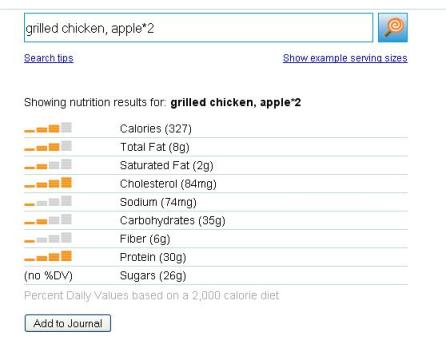




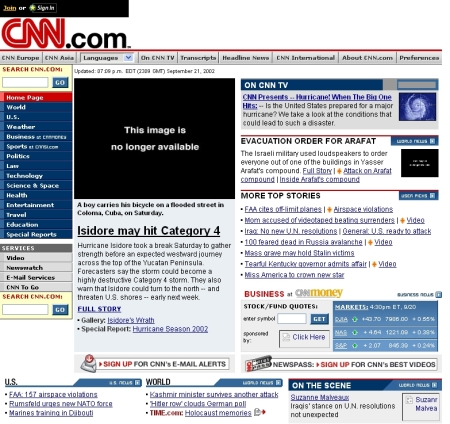




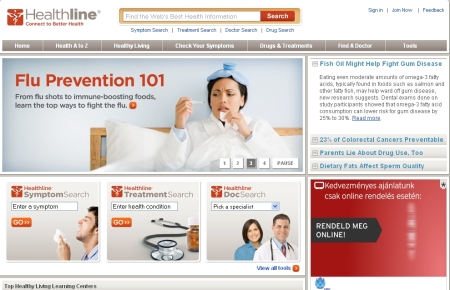




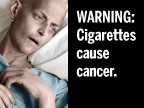 The FDA will soon require new cigarette package labeling to deter smoking. So in politically-correct governmental fashion, they are asking which labels you’d like to see. (You can pick your favorites here.) My personal favorite (so far) is the one shown to the left, but its impact factor pales in comparison to this example found in England. (That, my friends, is cancer!)
The FDA will soon require new cigarette package labeling to deter smoking. So in politically-correct governmental fashion, they are asking which labels you’d like to see. (You can pick your favorites here.) My personal favorite (so far) is the one shown to the left, but its impact factor pales in comparison to this example found in England. (That, my friends, is cancer!)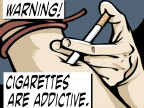 Ironically, it appears the FDA isn’t too sure how forceful it should be in these warnings about the dangers of smoking. They offer a cornucopia of milquetoast labeling options, many of which contain cartoons. Might such unrealistic portrayals defy they hard-hitting message they want to project? Worse, at least one cartoon (seen here) even seems to promote cigarettes AND drug use together!
Ironically, it appears the FDA isn’t too sure how forceful it should be in these warnings about the dangers of smoking. They offer a cornucopia of milquetoast labeling options, many of which contain cartoons. Might such unrealistic portrayals defy they hard-hitting message they want to project? Worse, at least one cartoon (seen here) even seems to promote cigarettes AND drug use together!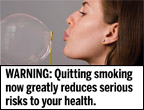 In an even more astonishing example, some images almost make me what to take up smoking so I can blow big bubbles. Since I could never do this well before, maybe I should take up smoking! Seriously, is an empowerment message what the government wants to portray?
In an even more astonishing example, some images almost make me what to take up smoking so I can blow big bubbles. Since I could never do this well before, maybe I should take up smoking! Seriously, is an empowerment message what the government wants to portray?